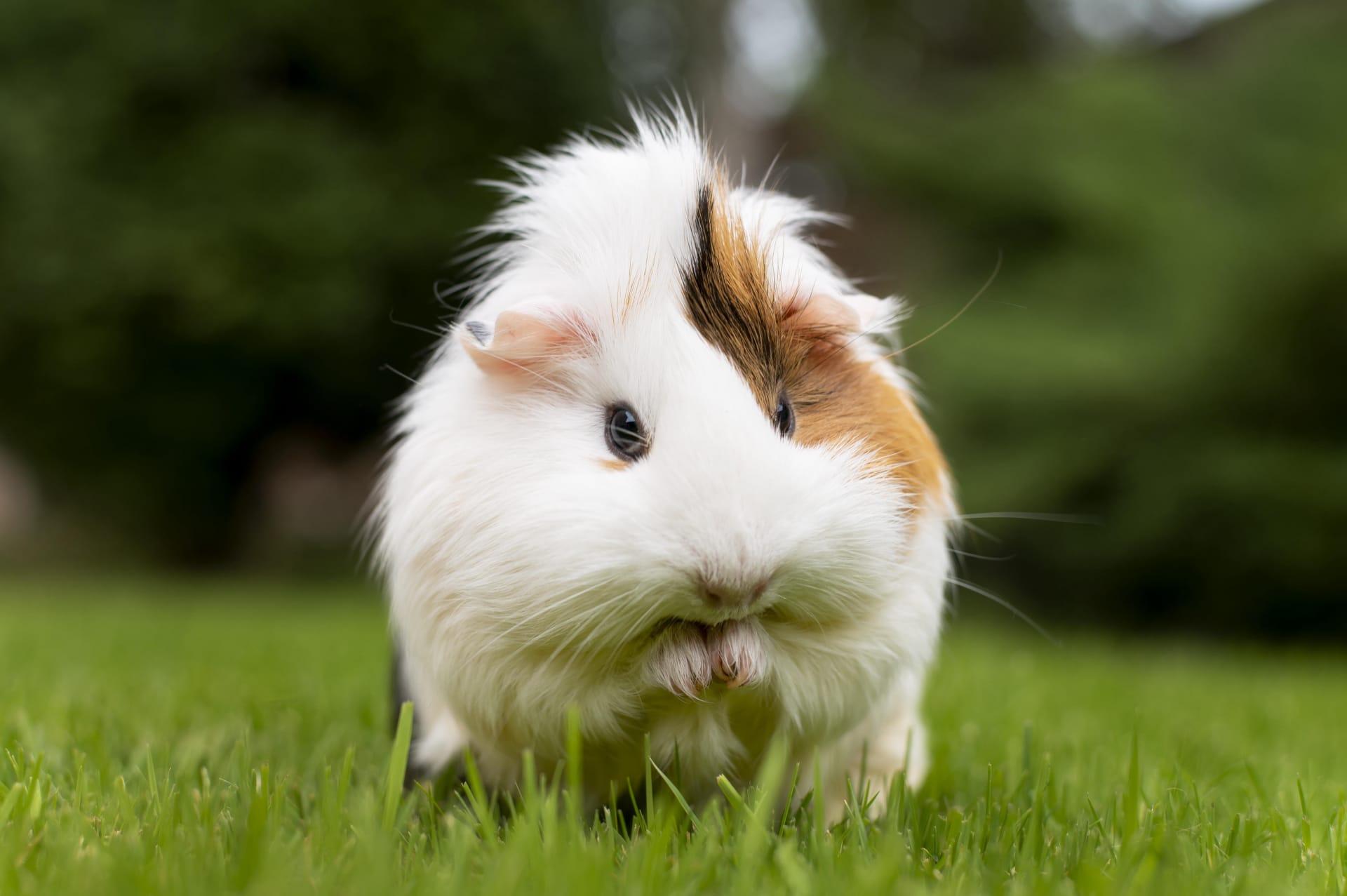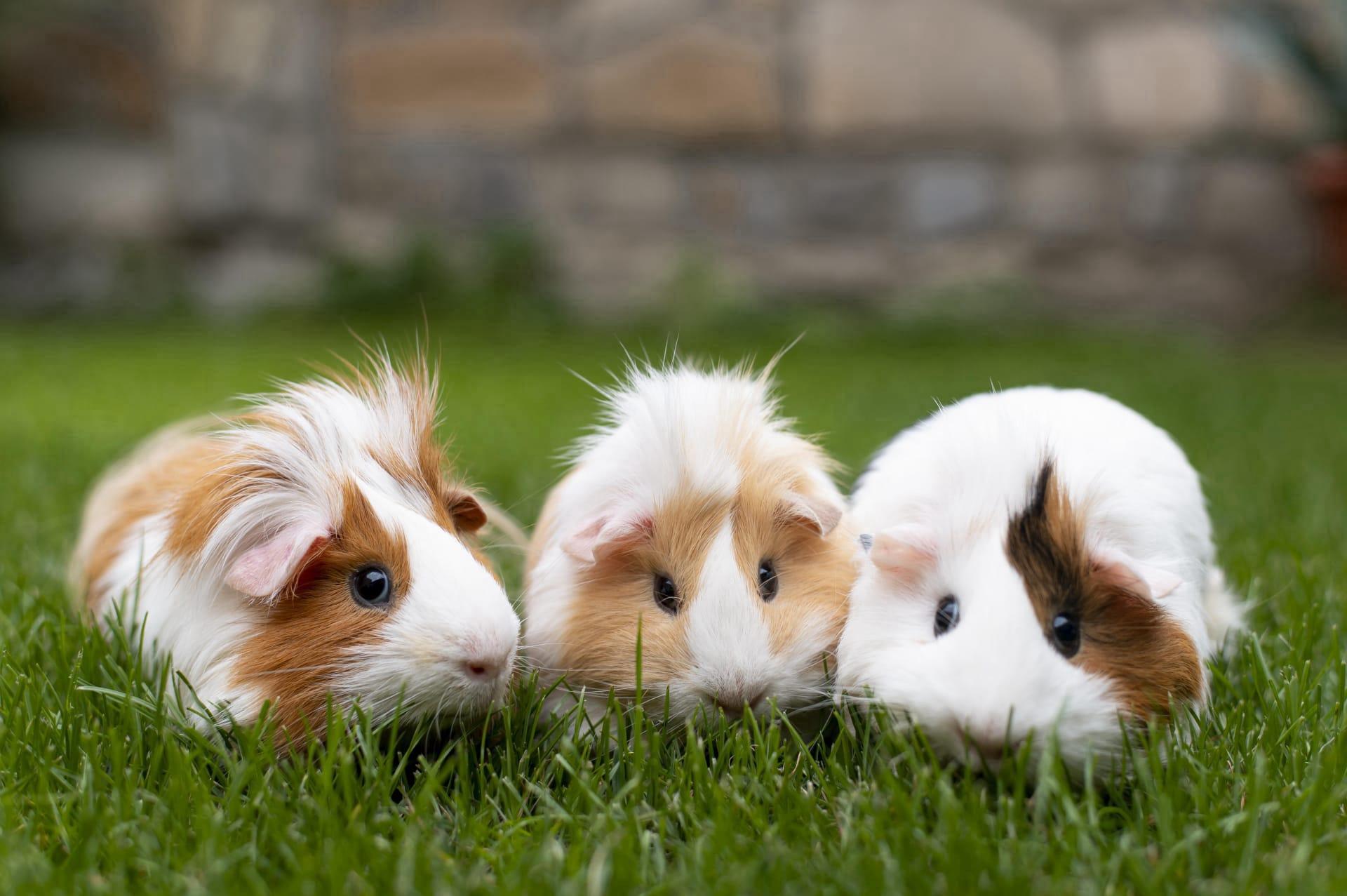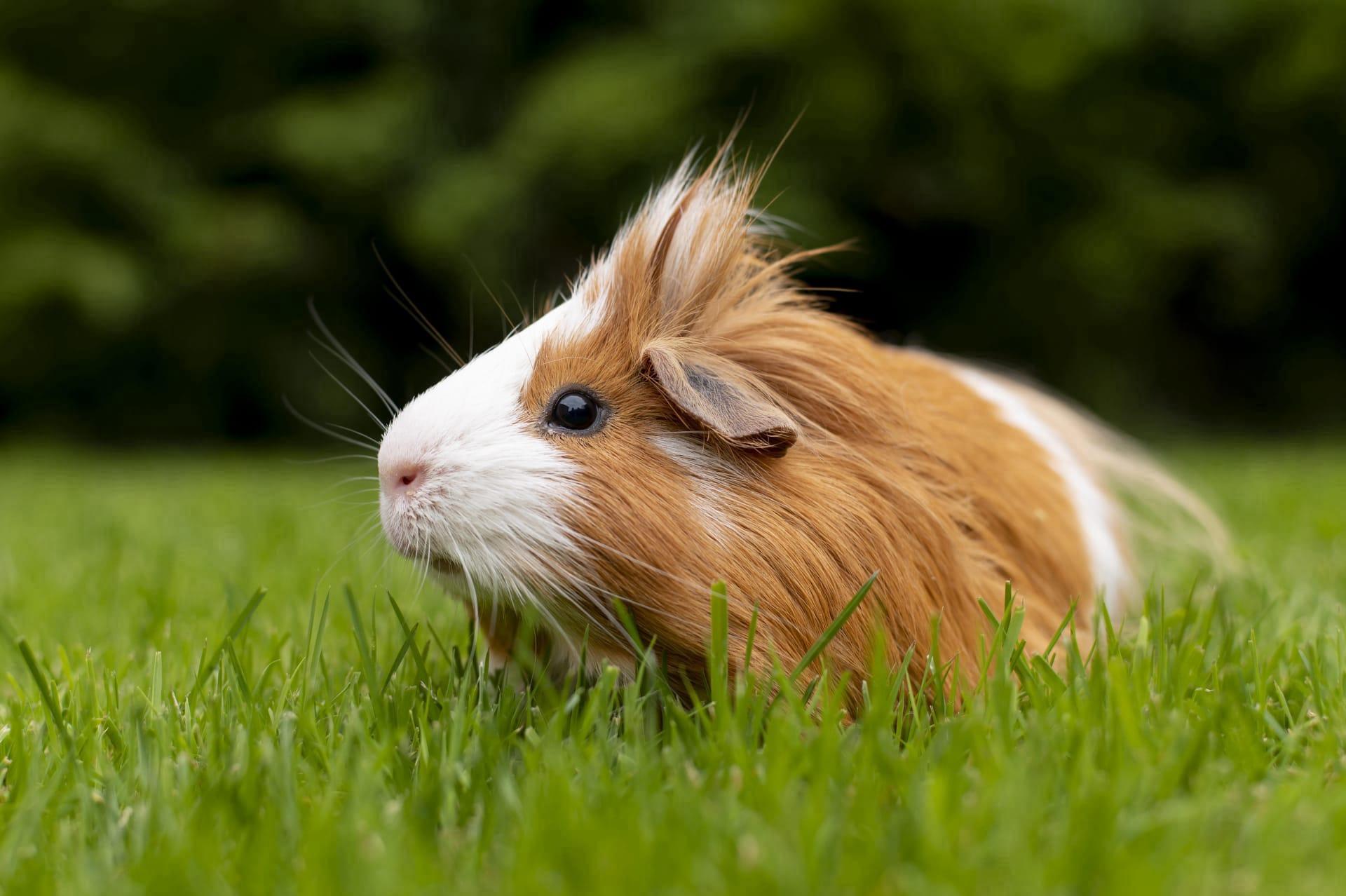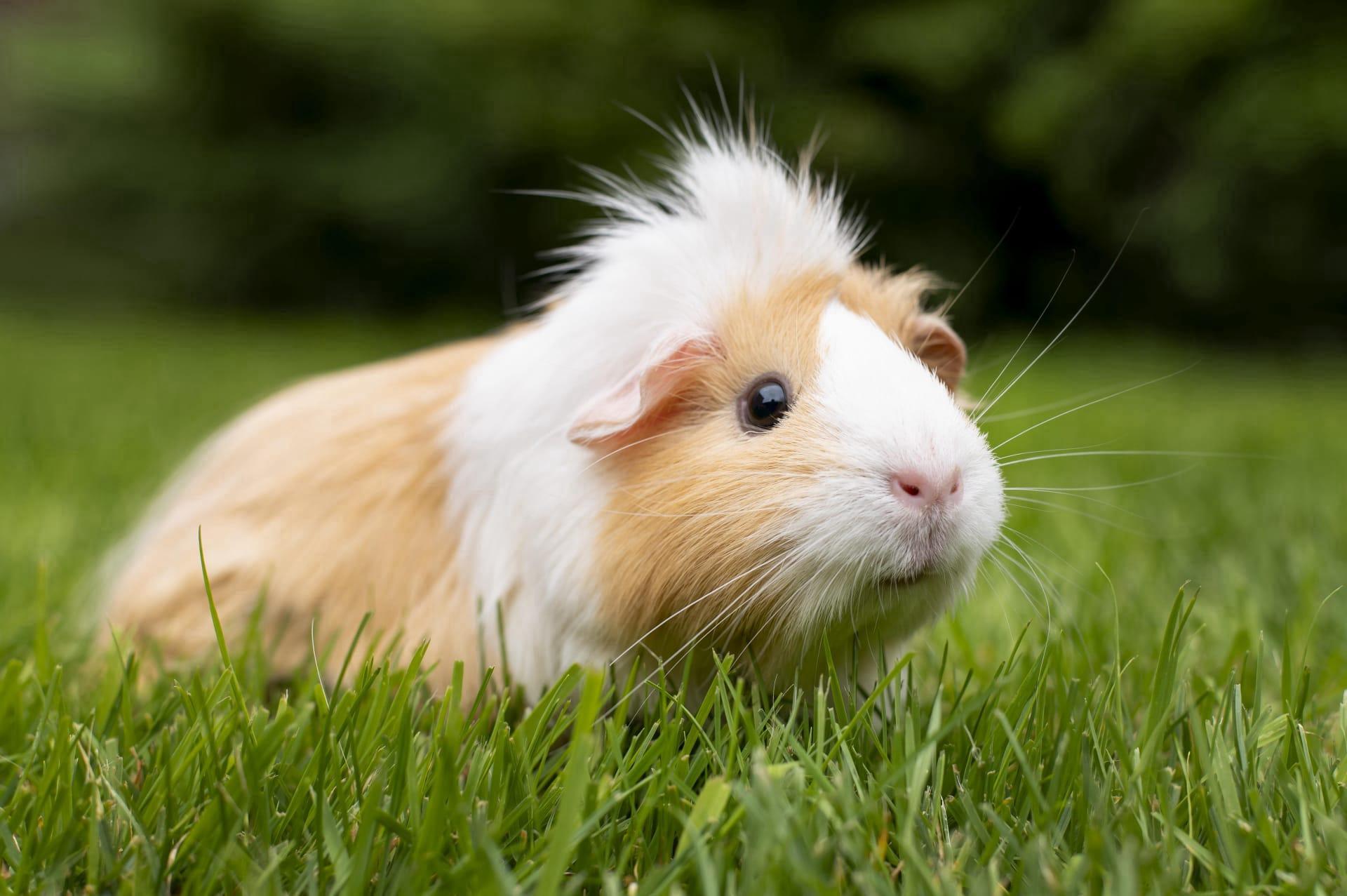Guinea Pig
- Home /
- Mini Encyclopedia /
- Animal /
- Guinea Pig
1
Guinea pigs, scientifically known as Cavia porcellus, are small rodents native to South America. They belong to the family Caviidae and the order Rodentia. These creatures are not actually pigs, nor are they from Guinea; their name is a bit of a mystery. Domesticated over 3,000 years ago in the Andes, guinea pigs were initially kept for their meat. They are closely related to species like the capybara and the mara. With a compact body, they typically measure about 8 to 10 inches in length and weigh around 1 to 2.5 pounds. Their fur comes in a variety of colors and patterns, including white, cream, brown, and black.
Originally from the Andean region of South America, guinea pigs thrive in environments with moderate climates. Today, they are found globally as domesticated pets. In the wild, they prefer habitats like grasslands, rocky areas, and forest edges. They are social animals, often living in small groups that consist of a few females, a male, and their young. These groups help them protect each other from predators. In domestic settings, they are popular pets due to their docile nature, ease of care, and the strong bonds they form with their owners.

2
Question: Do guinea pigs make good pets for small children?
Answer: It's a common misconception that guinea pigs are ideal pets for young children due to their small size and gentle nature. However, they require careful handling and are easily frightened. They can become stressed with rough or inconsistent handling, which might be challenging for very young children to understand. Additionally, guinea pigs need a stable environment, a proper diet, regular grooming, and health check-ups. While they can be great companions, the responsibility for their care should be with adults, ensuring these sensitive animals are treated gently and their needs are met.

3
Guinea pigs have a unique set of survival strategies that have enabled them to thrive both in the wild and as domesticated pets. In the wild, they are prey animals, which has led them to develop a heightened sense of hearing and smell to detect predators. They are also highly social animals and use a variety of vocalizations to communicate with each other, from purring to indicate contentment to a high-pitched squeal when in distress. Their social structure typically involves a dominant male, several females, and their offspring, which helps in lookout duties and protection from predators.
Another key survival strategy is their reproductive process. Guinea pigs mature sexually at a very young age, often as early as 3 months old. They have a short gestation period of around 59 to 72 days, and the offspring are born well-developed - furred, with open eyes, and capable of running within a few hours. This rapid maturity and development enable guinea pig populations to grow quickly and sustain their numbers despite being preyed upon by various predators.

4
In their natural ecosystem, guinea pigs play a significant role as prey animals. They are a vital food source for various predators, including birds of prey, snakes, and carnivorous mammals. This prey-predator relationship helps maintain the ecological balance. By being a food source for predators, guinea pigs contribute to controlling the population of these carnivores and maintaining the health and balance of the ecosystem they inhabit.
Guinea pigs also impact the ecosystem through their foraging habits. They primarily feed on grasses and other vegetation, which aids in plant control and nutrient cycling in their habitat. Their feeding habits can influence the composition of the vegetation in their environment, which in turn affects the overall ecology of the area. Furthermore, their burrowing and nesting activities contribute to soil aeration and the redistribution of nutrients, playing a subtle yet vital role in shaping their ecological landscape.

5
Film: "The Secret Life of Guinea Pigs" is a documentary produced in the United Kingdom in 2021. This film explores the hidden world of guinea pigs, delving into their social behaviors, communication methods, and the bond they share with humans. It provides insights into how these animals thrive in domestic settings and the importance of proper care and understanding of their needs.
Book: "Guinea Pigs: The Essential Guide to Ownership, Care, & Training for Your Pet" by Kate H. Pellham, published in the United States in 2015, is a comprehensive guide for guinea pig owners. This book covers everything from choosing the right guinea pig, to setting up a suitable habitat, to understanding their behavior and health needs. It's a practical resource for both new and experienced guinea pig owners.
Book: "Guinea Piglopaedia: A Complete Guide to Guinea Pig Care" by Margaret Elward and Mette Ruelokke, released in the United Kingdom in 2005, offers an in - depth look into the care, behavior, and breeding of guinea pigs. This book combines scientific information with practical advice, making it an invaluable resource for anyone interested in these fascinating creatures.